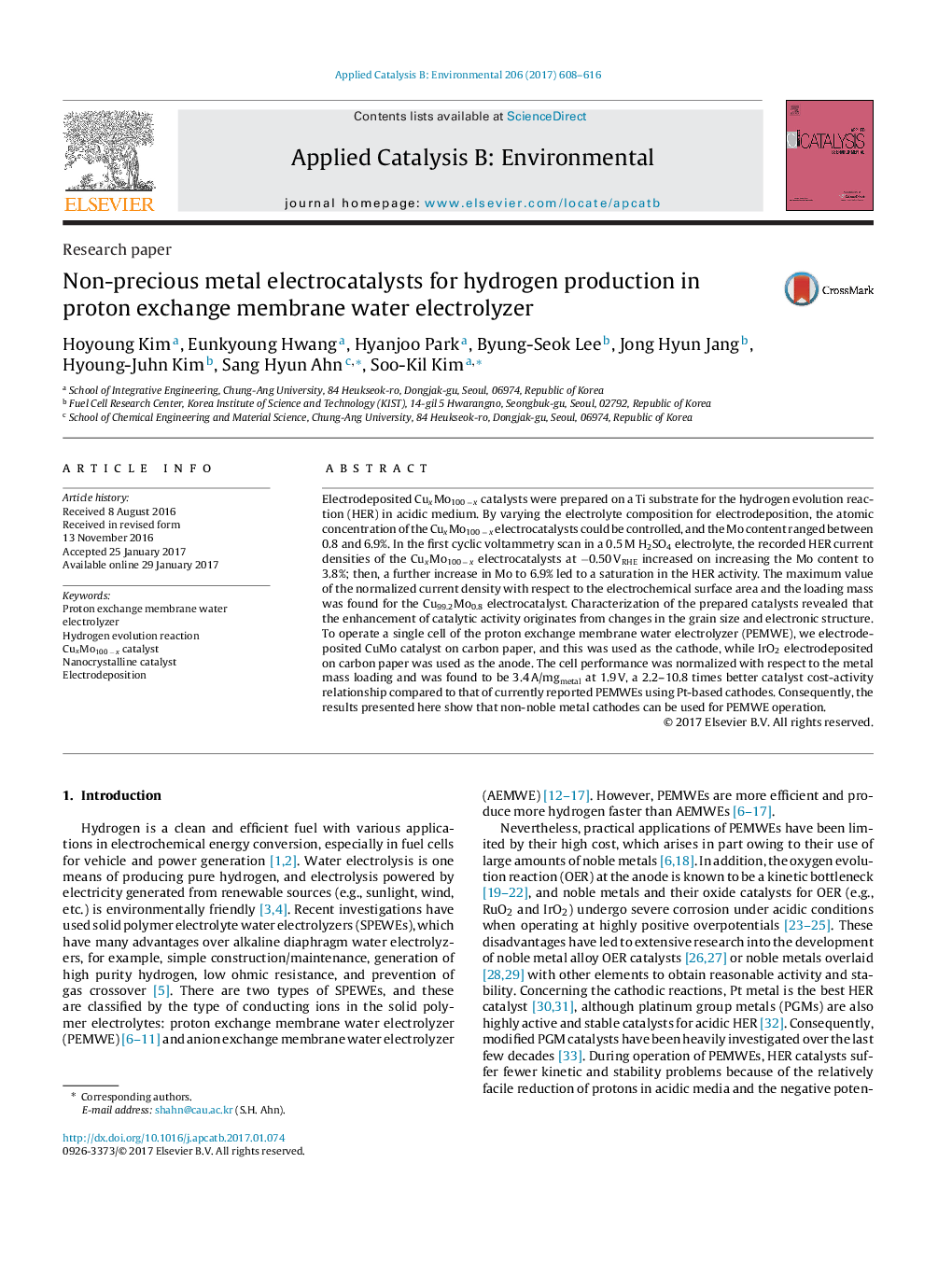| Article ID | Journal | Published Year | Pages | File Type |
|---|---|---|---|---|
| 6454761 | Applied Catalysis B: Environmental | 2017 | 9 Pages |
â¢CuxMo100 â x catalysts are prepared for hydrogen evolution reaction in acidic medium.â¢Small amount of Mo enhances catalytic activity of CuxMo100 â x catalysts.â¢Water electrolyzer with non-precious catalyst demonstrates reasonable performance.
Electrodeposited CuxMo100 â x catalysts were prepared on a Ti substrate for the hydrogen evolution reaction (HER) in acidic medium. By varying the electrolyte composition for electrodeposition, the atomic concentration of the CuxMo100 â x electrocatalysts could be controlled, and the Mo content ranged between 0.8 and 6.9%. In the first cyclic voltammetry scan in a 0.5 M H2SO4 electrolyte, the recorded HER current densities of the CuxMo100 â x electrocatalysts at â0.50 VRHE increased on increasing the Mo content to 3.8%; then, a further increase in Mo to 6.9% led to a saturation in the HER activity. The maximum value of the normalized current density with respect to the electrochemical surface area and the loading mass was found for the Cu99.2Mo0.8 electrocatalyst. Characterization of the prepared catalysts revealed that the enhancement of catalytic activity originates from changes in the grain size and electronic structure. To operate a single cell of the proton exchange membrane water electrolyzer (PEMWE), we electrodeposited CuMo catalyst on carbon paper, and this was used as the cathode, while IrO2 electrodeposited on carbon paper was used as the anode. The cell performance was normalized with respect to the metal mass loading and was found to be 3.4 A/mgmetal at 1.9 V, a 2.2-10.8 times better catalyst cost-activity relationship compared to that of currently reported PEMWEs using Pt-based cathodes. Consequently, the results presented here show that non-noble metal cathodes can be used for PEMWE operation.
Graphical abstractDownload high-res image (135KB)Download full-size image
